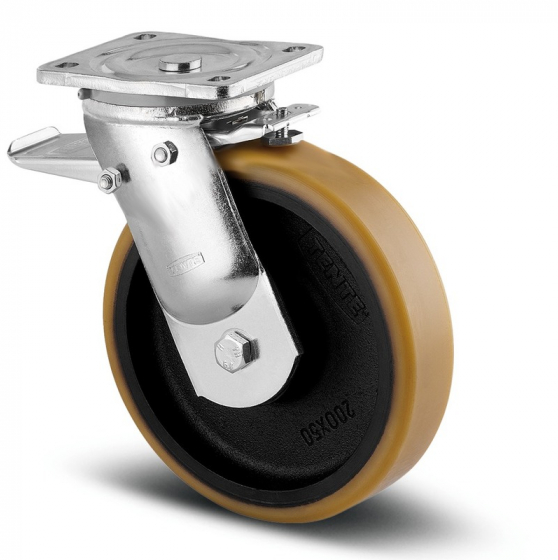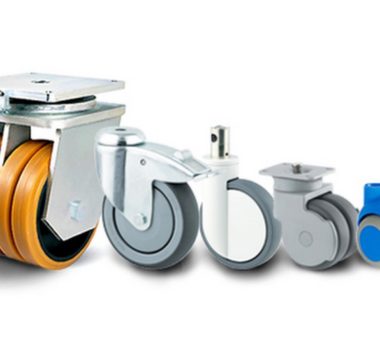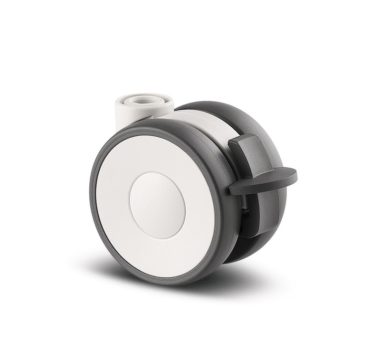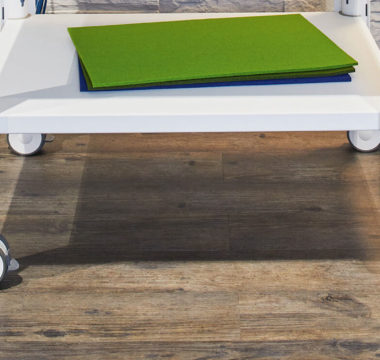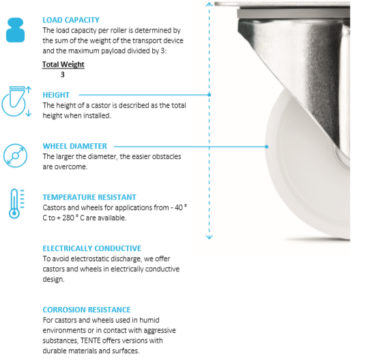The most popular choice in the material handling sector are polyurethane and rubber castors. They are frequently used interchangeably, regardless of their distinct features and are prevalent on around 80% of industrial applications.
Within this article, we will explore the different qualities of polyurethane and rubber castor wheels, and which one will be better suited for your needs.
What is the Difference Between Polyurethane and Rubber Castors?
Polyurethane and rubber castors have certain characteristics that make them better suited for different purposes. Rubber castors, for example, are often used on outdoor or rough surfaces, whereas polyurethane castors are frequently used on indoor or smooth floor surfaces.
The flooring surface is a vital consideration for all castor wheel choices. Rubber castors have a softer ride and greater traction over harsh terrain than polyurethane castors. In contrast, polyurethane castors offer superior load capacity and wear resistance.
The following are some of the most important factors when deciding on which type of castor is best suited for you.
Load Capacity
The maximum load capacity of polyurethane castors is typically greater than that of rubber castors. This is due to two key reasons. First and foremost, the material’s hardness. Secondly, polyurethane castors are far more resistant to splitting and tearing than rubber castors as rubber is a softer material.
Roll Resistance
Roll resistance is an important feature for ease of use. The lower the roll resistance, the easier it is to move the equipment. This increases operator comfort and efficiency. When it comes to reducing roll resistance, two things matter – consistency and hardness of the material.
Polyurethane castors are more uniform in nature than natural rubber because of their synthetic composition. The material’s highly consistent texture provides consistent levels of rolling friction, resulting in reduced roll resistance.
Resilience
The cushioning and resilience characteristics of a castor will determine the comfort and smoothness of the ride. Stiffness levels are measured in terms of cushioning. The softer the material, the more it will deform when traveling over an obstacle. As a result, rubber castors offer greater cushioning than polyurethane ones. However, here at Tente, we can create polyurethane castors with the same shore-hardness as a rubber castor, whilst still retaining a wear rate which is five times longer.
You need to remember that greater cushioning has a tendency to create more roll resistance. As a result, before choosing which material is appropriate for your application, you need to consider whether smoothness or maneuverability is more important.
Durability
Rubber castors offer a softer ride, but they don’t last as long as polyurethane castors. Rubber castor wheels lose tread with time, whereas polyurethane castor wheels have significantly higher resistance to wear and abrasion. Polyurethane castor wheels can survive up to three times longer than rubber castor wheels under controlled testing. Depending on the composition, polyurethane castors also tend to outperform rubber castors in terms of oil, grease, and chemical resistance.
As you can see, both rubber castors and polyurethane castors have advantages over one another. Polyurethane is a very durable and resilient material with the benefit of higher load capacities. Whereas rubber castors provide better operator comfort and are preferable to protecting delicate floors. Choosing the right kind of castor wheel is totally dependent on your need for it, where it will be used, and in what conditions they will be operated




